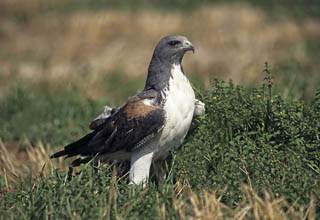by Alex Forsythe
I have had the pleasure of helping to band a Red-bellied Woodpecker. Their size and the length of their beak may seem fearsome, but they are far less aggressive when being extracted from the net than a Northern Cardinal. Cardinals will grab your skin with their beak and twist it!
I was in for a pleasant surprise with this bird: I got a close-up view of its tongue! It’s one thing to see a Red-bellied Woodpecker use that amazing tongue at your feeder, but it’s a far different thing when that tongue whips out right in front of you. The length is unbelievable: about three times the length of the bird’s beak. It resembles a weapon from a fictional apocalyptic movie: a long spear with multiple barbs facing backward toward the throat (like a harpoon on steroids), ending with a sharp point on the end, and coated with a sticky substance. It is a perfectly designed tool for extracting insects from their burrows, able to reach into a narrow opening, blindly search for and locate insects, and pull the insects out using the barbs and goo. In the case of a grub, the the sharp end of the tongue may be used to skewer its prey. “En garde! Oops. Too late.”
The beak itself harbors another weapon, this time used against unsuspecting nuts. The woodpecker cracks open nuts by using its beak as a hammer and a tree as an anvil. Wedging the nut into a crevice in the bark, the woodpecker pounds on the nut with its beak until the nut’s shell gives way.
Nuts are one of the bird’s favorite foods, but the other is insects. The Red-bellied Woodpecker is a voracious predator of some of our most harmful insects. One tree can contain 1,000 adult Emerald Ash Borer beetles. Woodpeckers have been observed consuming 95% of the larvae before they can emerge as adults, making them a natural and native biological weapon against these invasive and expensive pests (“Emerald Ash Borer in North America: a research and regulatory challenge”, Cappaert, et al., 2005). A friend of mine, birder and naturalist extraordinaire Jim McCormac, wrote about the increase in the Red-bellied Woodpecker and its relationship to the Emerald Ash Borer: Read Jim McCormac’s article to learn more. In Ohio where Mr. McCormac resides, the CBC totals in 2012 showed a 55% increase in population of Red-bellied Woodpeckers since 2003. Indiana’s 114th CBC had record numbers of Red-bellied Woodpeckers: 1929 statewide.
Red-bellied Woodpeckers are also painfully aware that it is prudent to save for a rainy (or snowy) day. They store food to sustain them during times that meals are hard to find.
Now let’s discuss the elephant in the room: the misleading name. People often mistakenly call this a Red-headed Woodpecker. It does have a red head after all, but the true Red-headed Woodpecker has a far more spectacular red head, so it claims that name. But what about the “red belly”? It’s not often that you can see the reddish color on the bird’s stomach while in the field. If you look very closely, you might see a reddish patch with a yellowish wash on the belly that looks as if someone dropped a dollop of paint on the bird and made a poor effort of trying to wash it off.
The invasive European Starling has been a constant source of irritation for our native Red-bellied Woodpeckers, evicting the woodpeckers from their nest cavities about 50% of the time (“Nesting phenology and competition for nest sites among Red-headed and Red-bellied Woodpeckers and European Starlings”, Ingold, 1989). This video of a battle between a Starling and a Red-bellied Woodpecker over a nest cavity will make you cringe.











